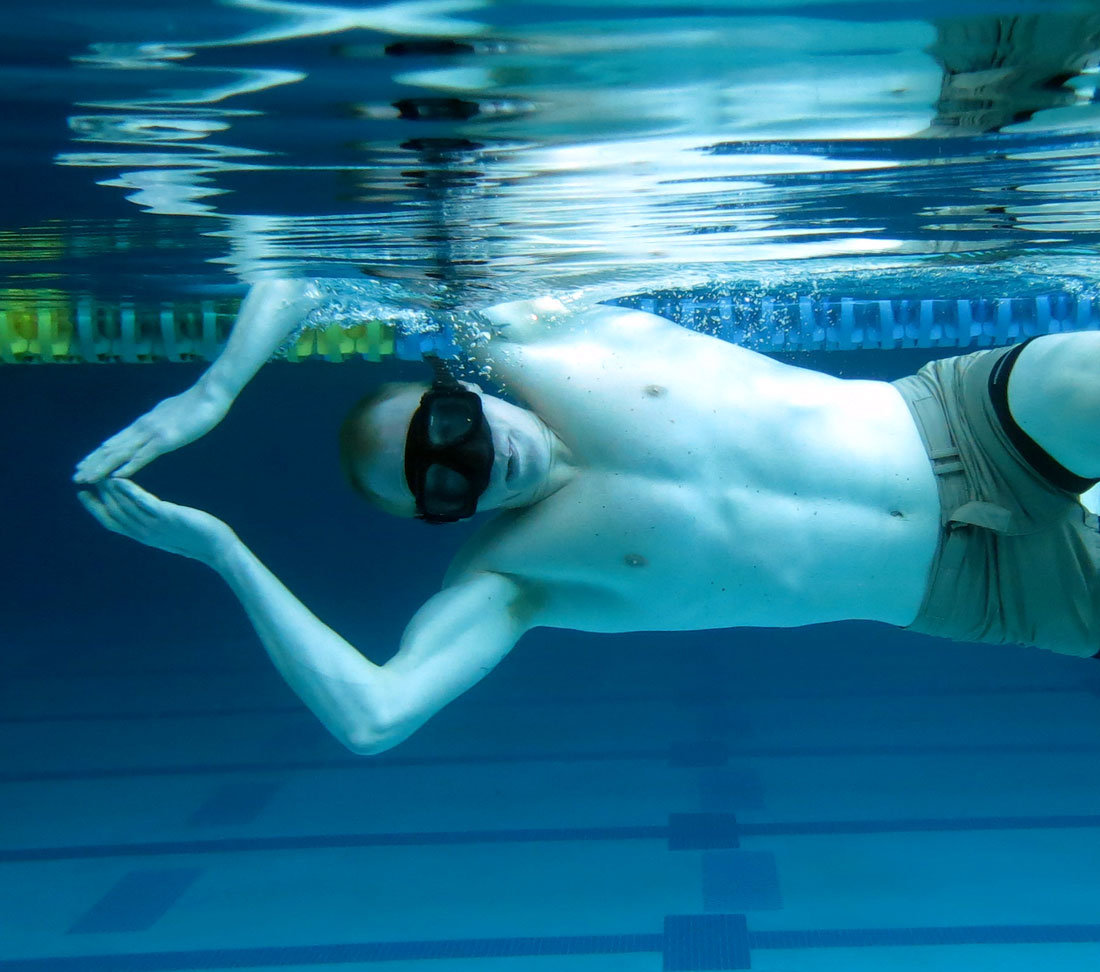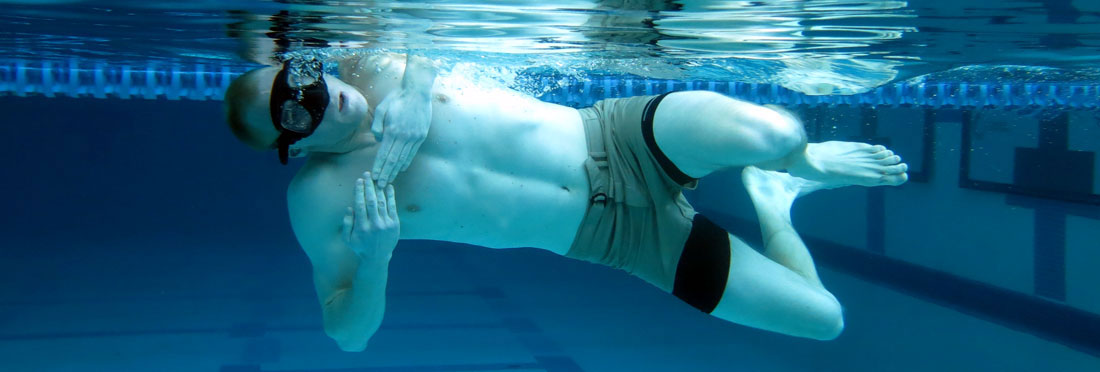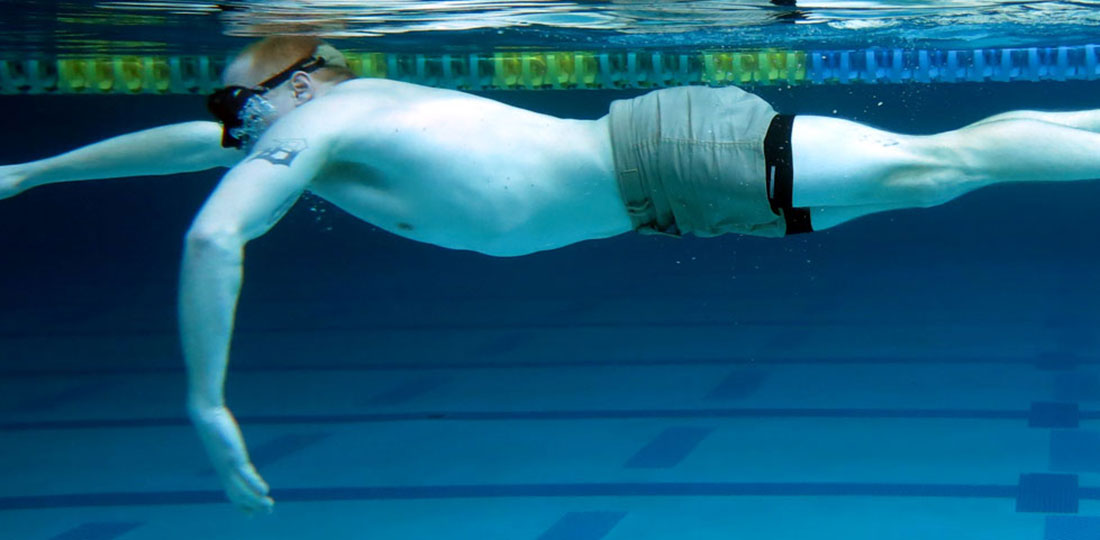Introduction to The Combat Sidestroke
Combat Sidestroke or CSS is taught and developed by The US Navy SEALs by Former Navy SEAL Stew Smith and Terry Laughlin from Total Immersion Swimming. It’s updated from the Traditional Sidestroke to be more relaxing and efficient.
The best part: It reduces your profile in the water. Stealth and endurance, made easy.
I have to give them props on this, it really does make it a lot easier to go long distances without totally depleting your energy reserves. When trying this out myself, it was tricky at first. I was able to master it to the best of my ability and get across the pool in 4 strokes. I was amazed at how much energy I still had after going 500m--the length that they make you swim in SEAL training. I did not time myself, but they ask that you complete it in 12 minutes in order to pass.
Sidestroke gets its name from the fact that the swimmer lies on one side with their arm and leg in motion.
The hands act like fins, as not to waste any energy. The breaststroke kick is powerful, opening the legs wide to provide more thrust rather than the small, fast movement of the flutter kick to recover. You will however use the flutter kick before and after the breaststroke kick to help propel the glide even further.
The Combat Sidestroke is a mix of sidestroke, freestyle, and breaststroke.
It reduces your profile in the water so one is less likely to be spotted during combat missions that require surface swimming. Chances are you won’t ever really need to master this stroke (unless you’re a secret spy or in the Navy SEALs). Nevertheless, It is very useful in any situation, and it’s always a good idea to know how to swim effectively in an emergency.
3 Pillars of Sidestroke Swimming
Navy SEALs teach you Balance, Length and Rotation are key.
-
Balance:
your Head and Lungs affect your balance in the water. In other words, buoyancy. Your goal is to be flat on the surface of water (unless you’re halfway through a combat mission). Now, with normal breaststroke, your head is up, which forces your hips to sink, almost like swimming uphill. When you’re balanced and you have proper buoyancy, flat on the surface and you’ll essentially feel like you’re going downhill. -
Length:
the taller a person is, the faster they swim. So when a swimmer is stretched out horizontally on the surface of the water, the drag is reduced, and they swim faster. -
Rotation:
Rotating your core is essential so your arms and legs don’t have to work as hard. It keeps your body from getting tired out quickly. A boxer uses the same principle when they rotate their body to put all their weight into a punch. A good rule of thumb for the combat sidestroke is: If your arms or legs are getting tired before your core, you’re not using your core enough. Use the muscles of your body evenly and you should have a lot of stamina using this method.
Now, you’re going to begin with learning the basics: Pull, Breath, Kick and Glide.
One would start by performing one freestyle stroke with your right arm. while your left arm is extended out, and while taking a breath, pull your left arm in, like you would in breaststroke. Perform one breaststroke kick to help with recovery and then using the momentum from the kick, glide as far as you can while remaining flat on the surface of the water. You will continue your flutter kick as you continue onward.
Each element of this stroke should propel your body forward. if you find yourself putting all your effort into a kick or a pull, you are going to exhaust yourself faster than necessary. Remember, there is no room for inefficiency in the Navy SEAL’s. They designed this stroke to take the most efficient elements of other swimming strokes.
2 Sidestroke Swimming Drills
-
Full Side Stroke:
begin with your body flat on the surface of the water and fully extend your arms, head facing downward, legs flutter kicking. Then the right arm pulls down in the water to the side of the body. At the same time the body rotates and you turn your head to take a breath from the side. After that the left arm pulls down to the side of the body, and the head moves back facing the bottom of the pool, enabling the body to stay horizontal. The hands move forward fully extended in front of the head while simultaneously performing a scissor kicking motion cork-screwing the body back to being flat in the water.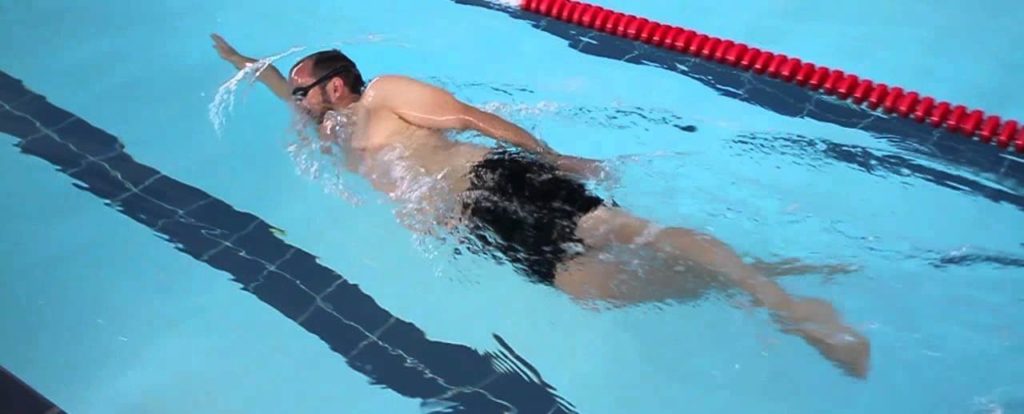
-
Halfway Side Stroke:
begin by imagining a full side stroke, as instructed above. The only difference is going to be the second arm. Instead of bringing the second lead arm fully down to the side of the body the arm will only half stroke. That arm moves halfway towards the body and is then brought back to being fully extended. This drill will feel rapid and that is the point. It helps most in extreme water conditions.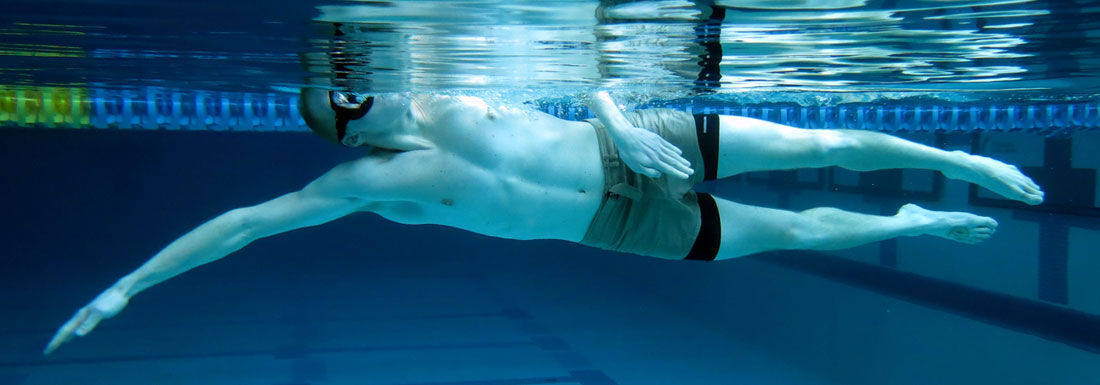
This awkward looking stroke saves lives everyday, especially in open water. Lifeguards, elite members of task forces, & Navy SEALs all use this technique for long distance swimming. They know how efficient it is. They know if they have to, they can go for miles using the CSS. It may look funny, but in reality, this is a super stroke used by the best and smartest swimmers in the world.
The Combat Side Stroke is a must-learn for any seasoned swimmer. It is best to learn it from a swimming instructor because it is an easy stroke to get wrong. The CSS allows you to have efficiency, speed and stamina in the water, while avoiding detection and exhaustion. Navy SEALs are the most efficient swimmers and are subjected to immense amounts of pressure. This is the swimming technique they bet their lives on when there’s trouble in the water. I hope you have fun learning this stroke because it could save your life one day!
Josiah Scrivner’s bio:
I’m 25 years old, & I spent 11 years as a competitive swimmer and have 4 years of just coaching. Those were some of the best years of my life. I spent about half of that time teaching others how to swim and passing along any techniques that I learned from the amazing coaches I swam with. I now pass this along to infants and adults alike. Outside of Coaching, I enjoy hiking with my dog and going to the beach to paddle board.
ABOUT SUNSATIONAL SWIM SCHOOL
Sunsational Swim School is the 🥇 #1 rated provider of private, at-home swimming lessons in America. We have specialized swim instructors for students ages 6 months to adult, beginner to advanced. Featured on ABC, CBS, Impact 100, The List and others, Sunsational instructors have a minimum of 2 years of teaching experience, are CPR certified and insured, and have collectively taught over 302,223 lessons for more than 74,415 students nationwide!


